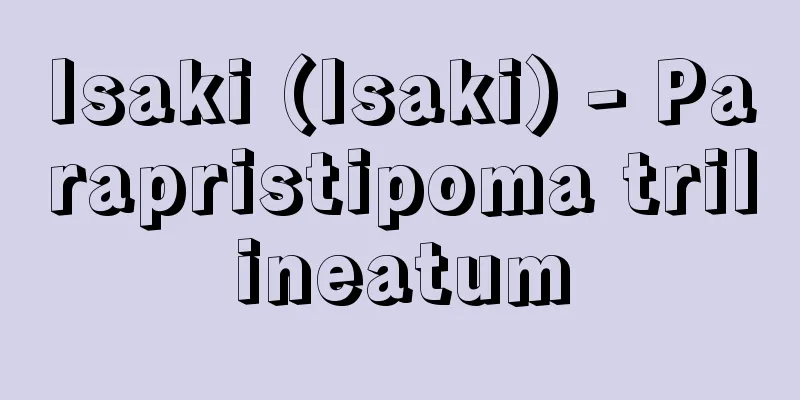Prizes - Prizes

|
An item given to a customer along with a product being sold or a service being provided, including money (such as grab coins), is an economic benefit given to a customer free of charge for the purpose of sales promotion. It is called a prize, a freebie, or in legal terms, a gift. The use value of a prize is generally different from that of the item being sold, and an increase in the amount of an item is usually considered a discount. Prizes are often used as an important means of sales promotion because they give customers the satisfaction of receiving something other than what they purchased for free and a sense of value, they can appeal to customers without lowering the price, and they are particularly effective as attention-grabbing advertisements when a new product is released or a new business is launched (a new entrant). [Kuniyuki Ueki] Prize provision method The method of providing prizes is as follows: [Kuniyuki Ueki] History of prize salesSales promotion using prizes has been practiced for a long time. In 1792 (Kansei 4), when Tamaya, a beni wholesaler in Edo, opened its store, it was famous for distributing the works of Santokyoden as prizes, and at that time, works by famous comic writers were often used as prize books. In the Meiji era, the use of prizes became even more active. In 1897 (Meiji 30), Murai Brothers & Co. famously offered expensive items such as gold watches and bicycles when they launched imported cigarettes, and Ezaki & Co. and Morinaga & Co. were also known for their successful efforts to include "freebies" for children when selling caramel. In newspaper sales, daily necessities were used, and this was called the "pot and kettle battle." Prizes were also used extensively overseas. In Germany in the early 20th century, there were calls for a ban on prizes, as they were seen as a strain on small and medium-sized businesses, and in 1923, a presidential decree (prize decree) was enacted to prohibit the practice. [Kuniyuki Ueki] Enactment of the Act against Unjustifiable Premiums and Misleading RepresentationsAfter the Second World War, in Japan, for similar reasons as in Germany, restrictions were imposed from around 1952 on prizes attached to several kinds of daily necessities such as miso and soy sauce, and prizes used in sales at department stores, which were deemed to be unfair trade practices under the Antimonopoly Act and constituted unfair benefits. However, prize sales became popular in industries not subject to restrictions, and the maximum prize value soared, for example, a trip to Hawaii for whiskey or 10 million yen for a 10 yen stick of gum, leading to growing social criticism. For this reason, the Unfair Premiums and Misrepresentations Prevention Act was enacted in 1962, which allowed the value of prizes to be limited to a certain limit. Pursuant to this law, the Fair Trade Commission imposes public notices limiting the maximum value and total amount of prizes in lotteries and the maximum value of prizes in other formats, and also imposes stricter limits than the general limits on a significant number of individual items through public notices or industry regulations. In addition, in so-called open contests that do not require the purchase of goods or other items, the maximum prize value is limited to 10 million yen under the Antimonopoly Act. Legal restrictions on prizes are based on the idea that they should be based on the quality and price of the goods sold or services provided. However, since the 1990s, the fact that offering prizes facilitates new entrants into the market has come to be recognized, and restrictions have been relaxed to a considerable extent. [Kuniyuki Ueki] [Reference items] | | | | | |Source: Shogakukan Encyclopedia Nipponica About Encyclopedia Nipponica Information | Legend |
|
販売する商品、提供するサービスなどに添えて顧客に贈る物品で、金銭(コインのつかみ取りなど)なども含まれ、販売促進を目的とし顧客に無料で提供する経済上の利益をいう。景物、おまけ、法令用語では景品類。景品の使用価値が販売するもののそれとは異なるのが基本で、品物などの増量は通常値引きとされる。景品は、顧客に購入するもの以外のものを無料で得るという満足感と割安感を与えること、価格引下げなしに顧客にアピールできること、とくに、新商品の発売、新規事業開始(新規参入)のときに人目をひいて広告としての効果が大きいことから、販売促進の重要な手段としてよく用いられる。 [植木邦之] 景品提供の方式景品提供の方式は、 [植木邦之] 景品付販売の歴史景品による販売促進は古くから行われ、1792年(寛政4)、江戸の紅問屋の玉屋が開店の際、山東京伝(さんとうきょうでん)の著作を景物として配布して成功したのが有名で、当時、著名な戯作(げさく)者の作品がしばしば景物本として利用されたという。明治時代に入ると景品の使用はさらに活発となり、1897年(明治30)、村井兄弟商会が輸入たばこの発売にあたり、金時計、自転車などの高額品を提供したのが有名で、江崎商会、森永製菓がキャラメル販売の際、子供向けの「おまけ」をつけたのも成功例として知られている。また新聞販売では生活用品が使われ、「鍋釜合戦」といわれた。外国でも景品の使用が激しく、20世紀初頭のドイツでは、それが中小企業を圧迫するとして禁止要求がなされ、1923年、大統領令(景品令)により禁止措置がとられている。 [植木邦之] 景品表示法の制定第二次世界大戦後のわが国では、ドイツと同様な理由で、1952年(昭和27)ごろから、みそ、しょうゆなどの数種の日用品に添付される景品や、百貨店の販売に用いられる景品などが、独占禁止法の不公正な取引方法の一つ、不当な利益供与にあたるとして制限が行われた。しかし制限外の業種で懸賞販売が盛んとなり、たとえばウイスキーにハワイ旅行、10円のガムに1000万円が当たるというように、景品の最高額が高騰し、社会的批判が高まった。このため、1962年、景品の額を一定限度に制限できるようにした「不当景品類及び不当表示防止法」が制定されるに至った。 この法律に基づき、公正取引委員会の告示で、懸賞方式の景品は最高額と総額、その他の方式は最高額が制限されており、また、相当数の個別の品目でも、告示または業界の規約により一般的制限よりも厳しい制限がなされている。 なお、物品などの購入を条件にしないいわゆるオープン懸賞では、独占禁止法により、景品の最高額は1000万円までとなっている。 法律による景品の規制は、販売される物品、提供されるサービスなどの品質と価格によって行うべきであるとの考え方を根拠にしているが、1990年代に入り、景品の提供が新規参入を容易にするという側面が着目されて、制限が相当程度緩和されている。 [植木邦之] [参照項目] | | | | | |出典 小学館 日本大百科全書(ニッポニカ)日本大百科全書(ニッポニカ)について 情報 | 凡例 |
Recommend
Kineya
...Today, some singers use this surname. It is al...
Continuous mapping
Let f : X → Y be a mapping from set X to set Y. Th...
River lowland - Kaseteichi
...Originally, any plain formed by the deposition...
Hajiki - Repelling
Unglazed pottery, a descendant of Yayoi pottery, ...
Isopropyl palmitate
…Sodium salts are used in soaps for organic synth...
Aosoza - Aosoza
In the late Middle Ages, this merchant group had a...
Odon - Odon
…It is valuable as the most reliable and rare sou...
ASW - Anti-Submarine Warfare
Anti-submarine warfare. It was established as a f...
Exchange transfusion
It was developed as a treatment for hemolytic dis...
Air-membrane structure - pneumatic structure
This refers to structures that are formed so that...
Solonchak
...When alkali-soluble black humic acid accumulat...
The Emishi Uprising in the First Year of the Kansei Era
...The last armed struggle of the Ainu people aga...
music synthesizer
…Music synthesizer is an abbreviation for music s...
Lake Kasumigaura [town] - Kasumigaura
A former town in Niiharu District, in the central-...
Hub - Habu (English spelling) habu
It is a poisonous species of the genus Habu in th...









